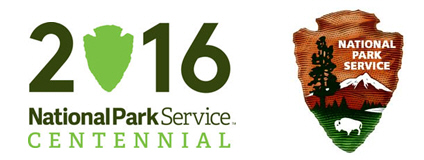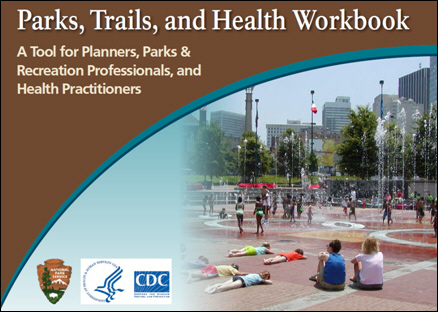  
Back
To News/PR Index
|

|
Using
Trails as a Pathway to Better Health
|
NPS
and CDC Unveil Trail Planning Workbook
|
Washington,
DC – May 2016 / Newsmaker Alert / There is more to a trail than meets
the eye. A well planned park or pathway promotes physical activity, protects
the environment, and provides health benefits for individuals and communities.
The National Park Service and the Centers
for Disease Control and Prevention recently released a toolkit for
planning trails with community health in mind - The
Parks, Trails, and Health Workbook: A Tool for Planners, Parks and Recreational
Professionals, and Health Practitioners.
“Community
health should be a core topic of conversation during every park, trail,
and open space planning project,” said Captain Sara Newman, Director Office
of Public Health, National Park Service. “This workbook provides step by
step instructions for community members, health professionals, and park
managers to incorporate public health ideas and strategies in the development
or improvement of green spaces.”
|
 |
|
National
Park Service community planners work in local communities with a wide range
of partners to plan and develop close to home recreational opportunities.
The workbook, developed by the National Park Service Rivers, Trails, and
Conservation Assistance Program and the Centers for Disease Control and
Prevention’s (CDC) Healthy Community Design Initiative, includes guidance
about how to create a community health profile, identify partners, assess
potential sites, collect data, and evaluate success.
In
the planning stages, it is important to determine public access and usability
and to ensure that facilities and amenities inspire activity. Geography,
visibility, safety, and accessibility are all important factors that can
determine the success of a trail or park.
Parks
can improve the mental and physical health of individuals by providing
places to relax, recreate, and socialize. They can also enhance the well-being
of a community by providing tree cover, reducing flooding risks, preserving
critical habitat, mitigating urban heat, and fostering public interaction.
“Improving
parks and trails can have co-benefits that are not always apparent,” said
Dee Merriam, community planner for CDC’s Healthy Community Design Initiative.
“For example, a retention pond can help with storm water management and
could also be a park amenity.”
The
Whatcom County Health Department and the Birch Bay Waterfront Group in
Washington used the workbook
to examine the health impact of proposed waterfront enhancements. The process
helped the community select changes to the waterfront that would increase
physical activity, enhance the safety of users, increase social cohesion,
and help boost the Birch Bay economy. The data they collected and information
developed were very useful and, as a result, Whatcom County’s Board of
Health has resolved to follow the workbook’s framework on all future health
and planning projects.
The
National
Park Service Rivers, Trails, and Conservation Assistance program supports
community-led natural resource conservation and outdoor recreation projects
across the nation. Our national networkof conservation and recreation planning
professionals partners with community groups, nonprofits, tribes, and state
and local governments to design trails and parks, conserve and improve
access to rivers, protect special places, and create recreation opportunities.
CDC’s
Healthy Community Design Initiative (HCDI) improves public health by
helping create built environments that support healthy choices where people
live, work, and play. HCDI works with local, state, and national partners
to integrate public health into community design, transportation, and land-use
decisions to provide people with convenient and safe opportunities to walk,
bicycle, or use public transit.
About
the National Park Service
More
than 20,000 National Park Service employees care for America’s 410 national
parks and work with communities across the nation to help preserve local
history and create close-to-home recreational opportunities. Visit us at
www.NPS.gov,
on Facebook Facebook.com/nationalparkservice,
Twitter Twitter.com/natlparkservice,
and YouTube YouTube.com/nationalparkservice.
Media
Contacts:
CDC-
NCEH/ATSDR
Office
of Communication
770-488-0700
Kathy
Kupper (NPS)
Media
Relations
202-208-6843 |
